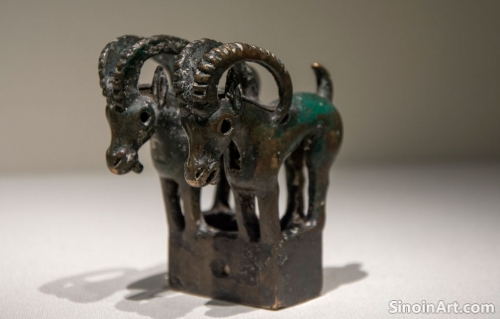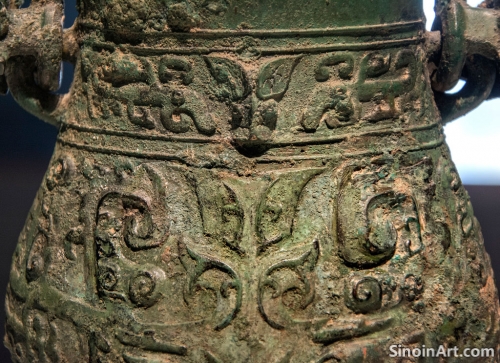The Use of Bronze in Ancient Chinese Agriculture: Tools and Innovations
|
While not as widely recognized as its use in warfare or ritual, bronze also played a role in ancient Chinese agriculture, with various tools and implements being created from this durable and versatile material. The use of bronze in agriculture highlights the important role that technology played in the development of ancient Chinese society. The integration of technology into agricultural practices helped to improve productivity and efficiency.  Bronze was used to create various agricultural tools, such as plows, hoes, and sickles, which would have been more effective and durable than earlier tools made from wood or stone. The use of bronze helped to improve the effectiveness of these tools and to allow for a higher yield from the fields. The innovations in tool design were key elements in the overall advancement of Chinese agriculture.  Bronze was also used to create implements for irrigation, such as pipes and valves, which helped to enhance water management and promote agricultural productivity. The use of these bronze implements helped to create a more reliable water supply, which was key to successful farming. The use of bronze in irrigation helped to improve the efficiency and reliability of food production.  The introduction of bronze tools and implements marked a significant step forward in ancient Chinese agricultural practices, helping to increase crop yields and support a growing population. The technological innovations of the era helped to make agricultural practices more efficient and reliable. The study of bronze in agriculture highlights the interplay between technology and societal development, showcasing how the material helped to shape the economic and social structures of ancient China. The careful study of agricultural implements reveals a wealth of information about the ancient Chinese economy. |
Tag : bronze agriculture, ancient tools, Chinese farming, agricultural technology, ancient economy
Related information
- The Inscribed Bronzes of the Zhou Dynasty: Narratives of History and Power
- The Influence of Bronze Ware on Ancient Chinese Architecture: Decorative Elements and Structural Supports
- The Ethical Considerations of Collecting and Studying Ancient Chinese Bronze Ware
- The Role of Bronze in Ancient Chinese Funerary Practices: Preparing the Deceased for the Afterlife
- The Influence of Bronze Ware on the Development of Chinese Calligraphy: Forms, Styles, and Materials
This article explores the inscribed bronzes of the Zhou Dynasty, emphasizing their importance as historical records, their role in establishing lineage and political legitimacy, and their significance in the development of Chinese writing.
This article explores the influence of bronze ware on ancient Chinese architecture, highlighting its use in decorative elements, structural supports, and other components that helped to enhance the beauty and functionality of ancient buildings.
This article examines the ethical considerations of collecting and studying ancient Chinese bronze ware, highlighting issues of provenance, cultural heritage, responsible research methods, and the need for careful stewardship of these irreplaceable artifacts.
This article explores the role of bronze in ancient Chinese funerary practices, highlighting the inclusion of ritual vessels, weapons, mirrors and other objects, and how these items reveal beliefs about the afterlife and the preparation of the deceased for their journey.
This article explores the reciprocal influence between bronze ware and the development of Chinese calligraphy, highlighting how bronze inscriptions shaped early forms of writing, established foundational principles, and contributed to the overall evolution of calligraphic styles.